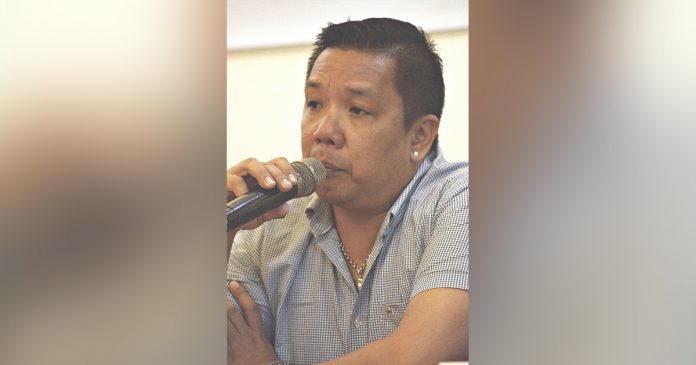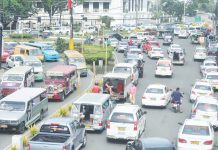
ILOILO City – The gradual easing of physical distancing in public transport aims to invigorate the economy battered by the coronavirus pandemic. But for now, the one-meter distance rule between passengers of public utility vehicles (PUVs) in Western Visayas remains.
For the regional offices of the Land Transportation Franchising and Regulatory Board (LTFRB), Land Transportation Office, Maritime Industry Authority, and Department of Health, being prudent is the way to go.
Their officials agreed yesterday not to rush in enforcing the Department of Transportation (DOTr) order reducing the space between public transport passengers.
According to Director Richard Osmeña of LTFRB, they would wait for further clarifications from DOTr, including the diagram for the new seating distance in PUVs.
On Monday in the National Capital Region, the physical distance between commuters inside public transportation was reduced from one meter to 0.75 meters as ordered by DOTr in Memo Circular No. 047.
This would be further reduced to 0.50 meters on Sept.28, then to 0.30 meters starting Oct. 12.
Iloilo City’s Mayor Jerry Treñas welcomed the regional offices’ decision. He said relaxing the physical distancing protocol at this time could increase the risk of people contracting SARS-CoV-2, the virus that causes coronavirus disease 2019 (COVID-9).
Several mayors in Iloilo province shared Treñas’ apprehension such as Mayor Jaime Esmeralda of Igbaras and Mayor Raul Banias of Concepcion, both medical doctors.
COVID-19 is mainly spread through droplets when an infected person talks, coughs or sneezes. A person can also contract the virus when they touch a surface with the said droplets then touch their eyes, nose, or mouth.
San Enrique town’s Mayor Rosario Mediatrix Fernandez, president of the League of Municipalities of the Philippines – Iloilo chapter, said people’s lives and public health must be prioritized.
Physical distancing, also called social distancing, means keeping a safe space between one’s self and other people. In the context of the COVID-19 pandemic, this aims to prevent transmission of the disease.
Defense Secretary Delfin Lorenzana, chairperson of the National Task Force Against COVID-19, said reducing the physical distance between passengers in public transport is okay as long as health and safety protocols are observed. These are the following:
* wearing of proper facemasks
* wearing of face shields
* no talking and eating
* adequate ventilation
* frequent and proper disinfection
* no symptomatic passengers
In this city, transport groups welcomed the move. It would mean they could accommodate more passengers.
Edgar Salarda, president of the Pinagkaisang Samahan ng Tsuper at Operators Nationwide-Panay, said the increase in seating capacity would mean better income for drivers and operators.
In the one-meter distance rule between passengers, he said, a jeepney could only accommodate a maximum of 10 people (five on each side). If the distance is reduced to 0.75 meters, the seating capacity would increase to 12 or 13, he said.
The Iloilo City Loop Alliance of Jeepney Operators and Drivers Association welcomed, too, the easing of physical distancing. President Raymundo Parcon does not believe it would result to COVID-19 transmissions because drivers would continue to enforce protocols such as requiring passengers to wear facemask and face shield.
“No facemask, no face shield, no ride,” said Parcon.
Rizal Alido, board secretary of the Iloilo City Alliance of Operators and Drivers Transport Cooperative, agreed with Parcon and Salarda.
“Mga drivers and operators dugay na nagabakho,” he said. “Indi kita magpadaog sa COVID-19.”/PN





